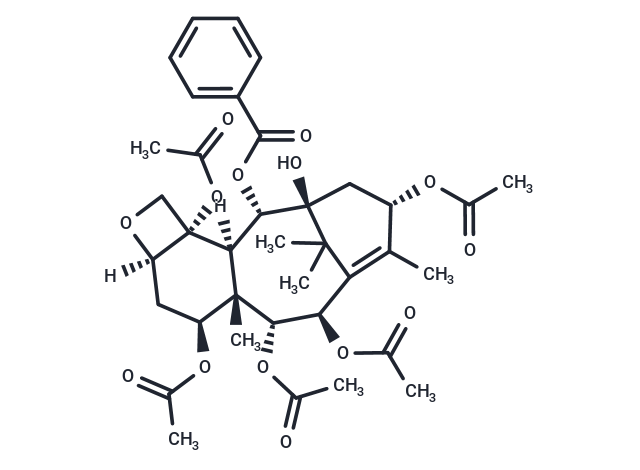Shopping Cart
- Remove All
 Your shopping cart is currently empty
Your shopping cart is currently empty

Baccatin VI possesses significant antinociceptive activity against p-benzoquinone-induced abdominal contractions.

| Pack Size | Price | Availability | Quantity |
|---|---|---|---|
| 1 mg | $273 | 35 days |
| Description | Baccatin VI possesses significant antinociceptive activity against p-benzoquinone-induced abdominal contractions. |
| In vitro | The dynamic variations of several important taxanes, taxol, baccatin III (B-III), 1-acety-5,7,10-deacetyl-baccatin I (DAB-I) and Baccatin VI (B-VI), were investigated in post-harvest clippings of Taxus chinensis. METHODS AND RESULTS:The clippings were preserved over 20 days at two different temperatures (4 degrees C and room temperature), or by cuttage in the light and in the dark, or promptly dried. The accumulation of taxol in needles of the clippings was found increase in the initial stages of the stored period and then decreased gradually. The maximum accumulation of taxol occurred in the case of cold storing (4 degrees C) at day 3, doubling the data on the day when the biomass was harvested. In contrast, in the cases of cold storage and cuttage the contents of the other three taxanes showed a sharp decrease at the beginning and then an increase from 3 to 6 days, and subsequently a drop until day 20. The similar variation of taxane contents was not found in the needles of immediately dried clippings as well as in the stem samples of clippings.CONCLUSIONS: These results indicated that the content variation of taxol and related taxanes of post-harvest clippings was related to the manner of preservation, timing and plant tissue. Moreover, the mechanism of the fluctuation of the taxane contents in post-harvest clippings is discussed, in particular taxol biosynthesis in response to mechanical wounding of harvest[1]. |
| Molecular Weight | 714.75 |
| Formula | C37H46O14 |
| Cas No. | 57672-79-4 |
| Relative Density. | 1.33 g/cm3 (Predicted) |
| Storage | store at low temperature | Powder: -20°C for 3 years | In solvent: -80°C for 1 year | Shipping with blue ice. |

Copyright © 2015-2024 TargetMol Chemicals Inc. All Rights Reserved.